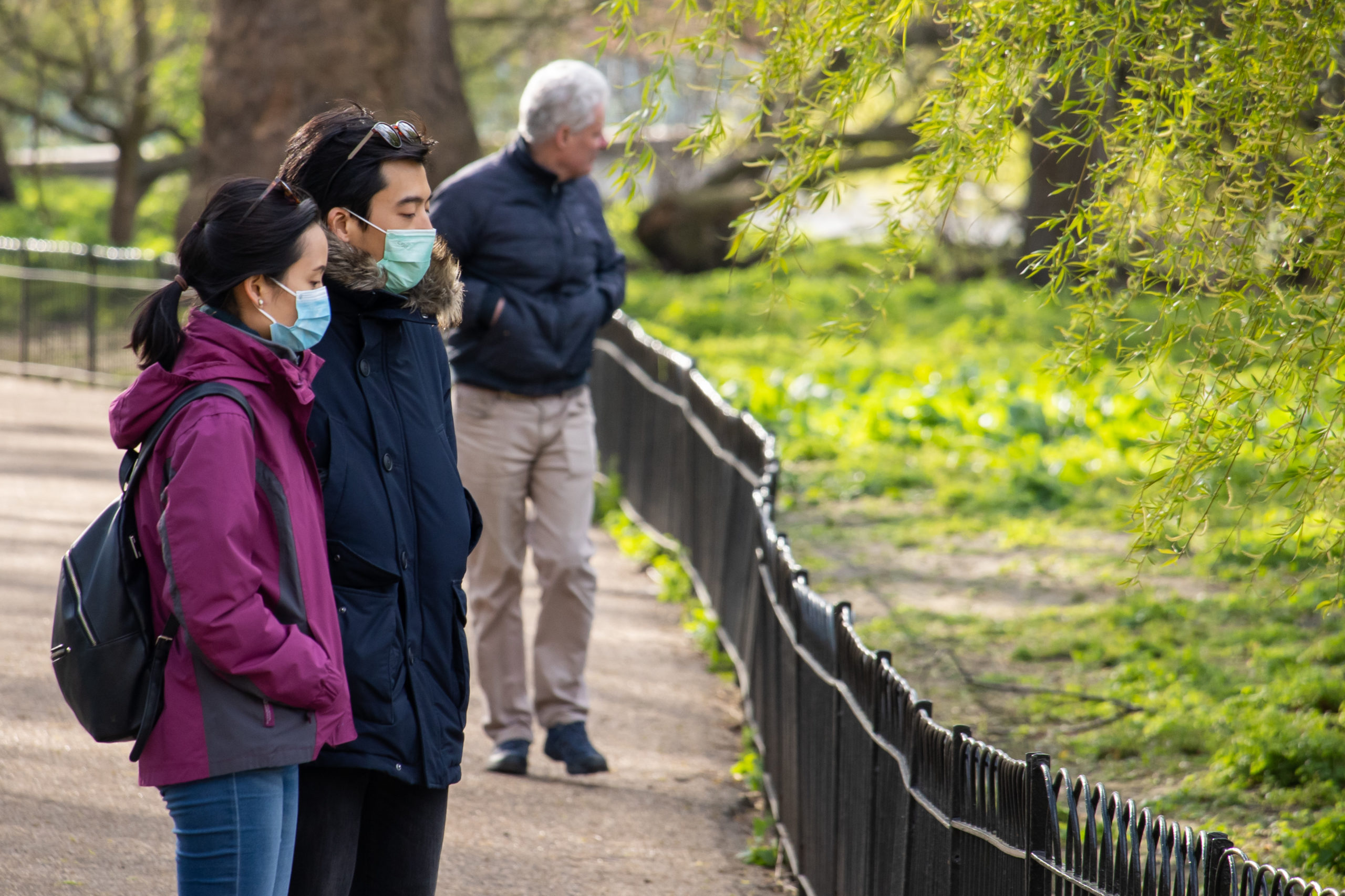This blog is part of the COMPAS Coronavirus and Mobility Forum.
To mask or not to mask, is the question of our current times. In the midst of the evolving COVID-19 pandemic, the face mask has become a symbol of solidarity and division on a global scale.
Wearing the face mask by the general public has become “a very vexed and very emotive issue” in the current public health debate. In countries like China, Japan and South Korea, wearing face masks is a key, if not compulsory, measure of protection that shields individuals from potential infection. In the West, however, public health authorities continue to openly discourage everyday use of face masks by the general public as the disease rampaged through Europe and the US.
“Maskaphobia”
For Chinese living in Europe, disbelief and panic escalate as the COVID death toll rises up along a sharp curve on a daily basis. People question why the West has been stubbornly rejecting the face mask as a simple yet effective method they believe has helped keeping the outbreak under control back home. As early as February, Chinese people in the UK started wearing face masks in public as a precaution, an action that triggered widespread “maskaphobia” and racist attacks.
In Bristol, some Chinese parents withdrew their children from schools in late February due to instances of racial hostility. Chinese students on university campuses walked in groups to avoid being alone. A number of students wore face masks when they attended lectures only to be told to either remove the mask or remove themselves from the class. One of my students kept a mask in her coat pocket and would only wear it if she were amongst Chinese or Asian looking groups. Another student wrote on the outside of his mask “I’m fine” when he visited local supermarkets.
On Chinese social media, some argue that maskaphobia in the West is a product of white privilege and superiority – wearing the mask would be an admission of weakness and defeat. Others link it to the widespread anti-China sentiment at the back of a growing suspicion and unease towards China’s “facemask diplomacy”. A strong nationalistic sentiment is gaining force.
The mass movement and the mask movement
In early March, when it became clear that the UK’s lack of strong response was linked to ideas of “herd immunity”, Chinese fled the UK en masse and organised their own flights back to China with great urgency in search of safety and protection. Chinese students chartered their own planes and sold tickets to their friends and classmates. An economy-class ticket cost at least £2,000 at this extraordinary time when it would normally cost £700. More privileged students chartered private jets, with ticket prices ranging between £20,000 to £30,000. Such tickets were sold out quickly on social networks as people bought multiple tickets on different days in anticipation of flight cancellations and increasing travel restrictions.
For Chinese who decide to stay in the UK, sourcing additional face masks and other protective gears became a matter of top priority. Within days, “face mask groups” (kouzhao qun) are established on Wechat (China’s most popular social network platform) across UK cities. In a Bristol based kouzhao qun, the group leader (a housewife with young children) talked about her strong sense of mission and commitment (shiming gan) to her fellow Chinese. Through her social connections, masks sourced from Korea, Vietnam and European countries such as Poland are sold to group members at a reasonable price and shipped to the UK within days. The group leader then makes a personal delivery as a social service to help her fellow Chinese.
Will the mask become the new veil?
Many Chinese families in the UK have stockpiled different types of face masks in the usual fashion of a few hundred disposable surgical masks, a few dozen N95 respirators, a couple of cloth masks, and a niqab-style headscarf. Each type of mask serves a different purpose. The disposable surgical masks are for everyday trips to the supermarket, and the N95s are for higher risk travels such as going for work. The cloth mask is worn on top of the medical mask to prolong its lifespan and provide an added layer of protection. And the headscarf, ironically, shields Chinese from racial harassment. “If I wear a face mask in the shops, everyone treats me like a disease;” one woman in Bristol told me, “but no one looks at me if I wear the niqab on top of the mask. Pretending to be a Muslim makes life easier.”
Crystallising not only cultural and political differences, the face mask tells tales of knowledge circulation, the transnationalisation of nationalism, and the cross-border mobilisation of people and things in the context of reduced mobility. In a curious way, the face mask embodies a new border we have to face in the coming months and years – a border that divides and connects at the same time. As the Korean artist Jinjoon Lee perceptively observed, the face mask has become a talisman of our time, one that conjures up trust, science, and strength in transnational solidarity against contagion and prejudice.
Juan Zhang is Lecturer in Social Anthropology, University of Bristol.
